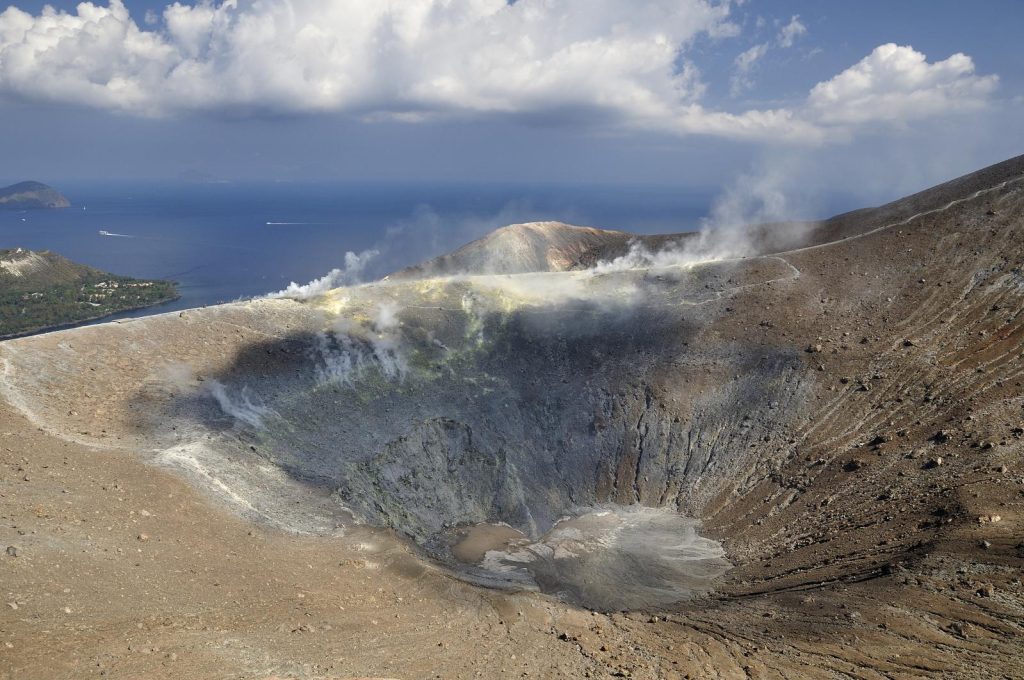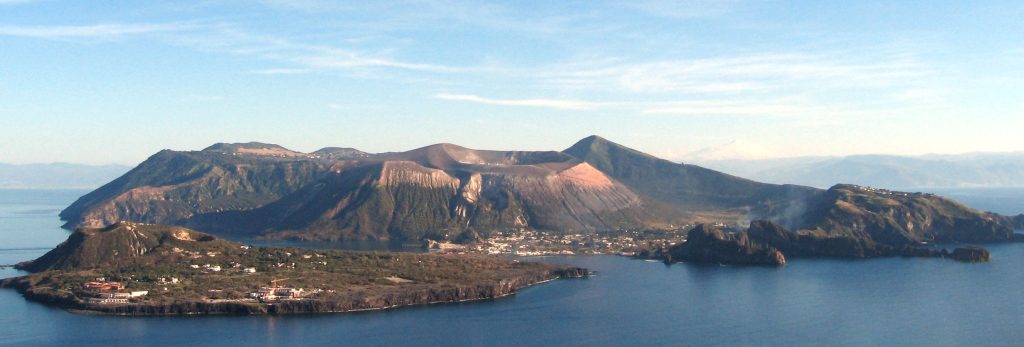April, 25, 2023—A team of scientists discovered microbes that eats carbon dioxide “astonishingly quickly.”
The researchers, Two Frontiers Project, first observed the carbon-eating microbes back in September of last year on the volcanic Italian island of Vulcano, about 12 miles north of Sicily in the Tyrrhenian Sea.

“Our lead collaborator at Harvard isolated this organism that grew astonishingly quickly, compared to other cyanobacteria,” Dr. Braden Tierney, one of the project’s founders, said in an interview with “The Guardian.”
The microbe, as Tierney mentions, is a type of cyanobacteria, which are — according to a University of California, Berkeley resource — aquatic and photosynthetic. The recently discovered cyanobacteria, however, live in the carbon-rich environment of Baia de Levante in Vulcano. Two Frontiers Project refers to this area as “one of the only characterized shallow carbon seeps in the world — a gradient of dissolved carbon dioxide that originates from extremely low pH (acidic), volcanic seeps (vents).”
While Two Frontiers Project is still reviewing their findings and have yet to officially publish their data, the hope is to eventually utilize various microbes to absorb carbon dioxide to combat climate change — often referred to as carbon capture.
Carbon capture and storage refers to any process of removing carbon dioxide from the atmosphere or preventing their release in the first place.

In a New York Times feature on carbon capture, Deputy Director of the Nature Conservancy Rebecca Benner said while nature has been able to balance out carbon emissions for much of human history, humanity is now “producing CO2 much faster than nature can recapture it.”
The oversaturation of greenhouse gasses is fueling research into many avenues of carbon capture, including microbes like the one discovered in Italy.
“If naturally evolved, hyper-efficient carbon capture microbes exist on Earth, they will be places like this,” their website reads.
“The project takes advantage of 3.6 billion years of microbial evolution,” Tierney said. “The nice thing about microbes is that they are self-assembling machines. You don’t have that with a lot of the chemical approaches [to CO2 capture].”
Tierney does elaborate that such microbes would only be a piece of a solution to climate change.
“There really isn’t a one-size-fits-all solution to climate change and carbon capture,” Tierney said. “There will be circumstances where the tree is going to outperform microbes or fungi. But there will also be circumstances where you really want a fast-growing aquatic microbe that sinks.”

As scientists have studied more of the impacts of climate change, the importance of aquatic methods of carbon capture have only increased.
“As humans burn fossil fuels, we put carbon dioxide into the atmosphere,” University of Washington School of Oceanography Associate Professor Alex Gagnon said in an interview with King 5. “More than 25% of that, more than a quarter of that carbon dioxide, ends up in the ocean.”
An increase in carbons in the water is altering the pH balance of not only the oceans, but bodies of water like the Puget Sound.
“A lot of that, as it ends up in the surface ocean, it literally changes ocean chemistry,” Gagnon said. “The ocean’s becoming more acidic, and as it becomes more acidic, it’s more corrosive to organisms like oysters who build shells, which impacts fisheries, and it makes it harder for salmon to sniff and find their way home.”
As oyster populations plummeted in Puget Sound, a panel created by former Governor Christine Gregoire in 2012 recommended phytoremediation — the use of plants to clean up contaminated areas. This led to a group of researchers from the Puget Sound Restoration Fund, the National Oceanic and Atmospheric Administration (NOAA) Pacific Marine Environmental Laboratory and the University of Washington to conduct experiments with kelp farms to help remove carbon from the Puget Sound.
The team did find that the kelp had to be harvested or it would get decomposed by bacteria, which would release carbon dioxide back into the water. The harvested kelp, however, can be used as food, crop fertilizer, or be processed into biofuel.
Between the Biden Administration, entities like SpaceX, and investments in carbon capture and storage hitting $6.4 billion in 2022, interest in carbon capture is undoubtedly increasing. However, as Tierney noted, it is only a piece of the solution. There is no catch-all remedy to climate change. Reducing emissions is still a key part of the solution.
“If you’re doing too little on the emissions mitigation side, then there is no point of carbon dioxide removal,” Glen Peters, a research director at the Center for International Climate Research in Norway, said.
RELATED ARTICLES
- MOVEMENT AGAINST CONTROVERSIAL WILLOW DRILLING PROJECT IN ALASKA GROWS
- NEW DISCOVERY AT CASCADIA SUBDUCTION ZONE THREATENS TO UNLEASH 9.0 EARTHQUAKE








